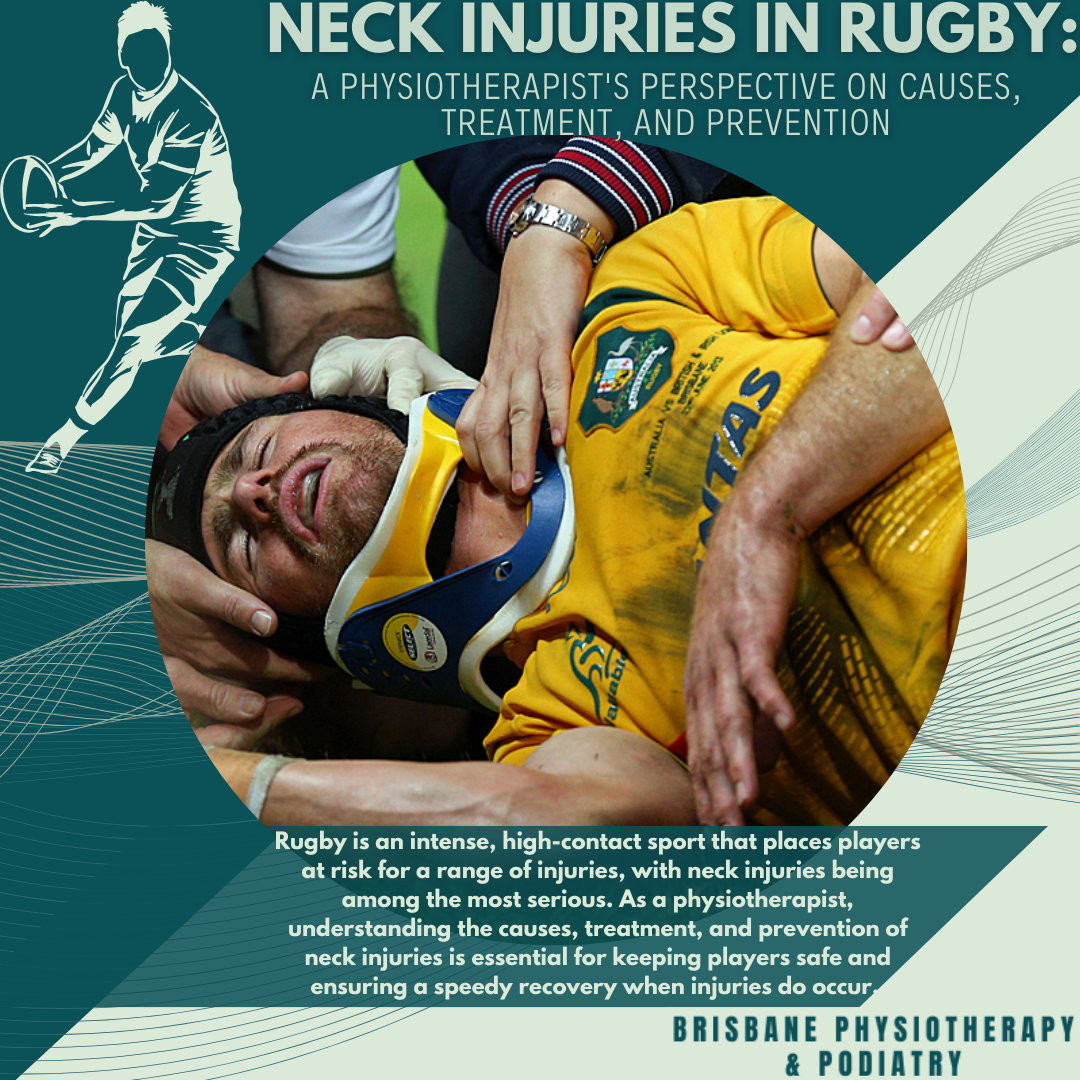Neck Injuries in Rugby: A Physiotherapist's Perspective on Causes, Treatment, and Prevention
Rugby is an intense, high-contact sport that places players at risk for a range of injuries, with neck injuries being among the most serious. As a physiotherapist, understanding the causes, treatment, and prevention of neck injuries is essential for keeping players safe and ensuring a speedy recovery when injuries do occur.
Common Neck Injuries in Rugby
Whiplash and Cervical Sprains: These injuries occur when the head is suddenly jerked forward or backward, overstretching the muscles and ligaments in the neck. Physiotherapists treat whiplash with gentle exercises to improve range of motion, as well as manual therapy and pain management techniques.
Stinger (Burner): A stinger is caused when the neck is forced into an awkward position, often during a tackle. The result is a burning or stinging sensation down one arm. Physiotherapists may use manual therapy, strength and mobility exercises, and other rehabilitation techniques to rehabilitate a stinger.
Cervical Fractures and Dislocations: These are the most severe neck injuries, caused by significant trauma to the cervical spine. Physiotherapists work with other medical professionals to manage these injuries and assist with rehabilitation once the acute phase has passed, focusing on restoring neck mobility and strength.
Cervical Radiculopathy: This occurs when a nerve in the neck is compressed, often causing numbness, pins and needles or loss of strength in one arm. Physiotherapists treat cervical radiculopathy with manual therapy and specific exercises to reduce nerve pressure and improve neck strength and flexibility.
Causes of Neck Injuries in Rugby
Rugby’s physical demands and high-impact nature increase the risk of neck injuries. Physiotherapists need to be aware of the primary causes:
Improper Tackle Technique: Tackling with the head down or in an awkward position can lead to hyperextension of the neck. Physiotherapists collaborate with coaches to educate players on proper tackling form, emphasizing the importance of keeping the head up to minimize injury risk.
Scrums and Rucks: Scrums exert significant pressure on the neck, especially if players aren’t aligned properly. Physiotherapists recommend strengthening exercises for the neck and upper body to prepare players for the physical demands of scrums.
High-Speed Collisions: Rugby players often run at high speeds before engaging in tackles, which increases the force of impact. A strong neck and upper body are essential for absorbing these forces safely, and physiotherapists focus on building these areas to prevent injury.
Preventing Neck Injuries
Preventing neck injuries is just as important as treating them. Physiotherapists help reduce the risk by:
Education: Teaching players safe tackling techniques and proper body posture during play.
Strength and Conditioning: Developing strength and flexibility programs that target the neck and upper body to prepare players for the demands of rugby.
Corrective Exercises: Identifying and addressing any weaknesses or imbalances in the player’s body to ensure proper biomechanics and reduce strain on the neck.
Conclusion
Neck injuries in rugby can be serious. Physiotherapists are essential in both treating these injuries and preventing them. By focusing on proper technique, strength training, and early intervention, physiotherapists help players recover from neck injuries and minimize the risk of future harm. With their expertise, rugby players can safely return to the field, stronger and more resilient than before.

